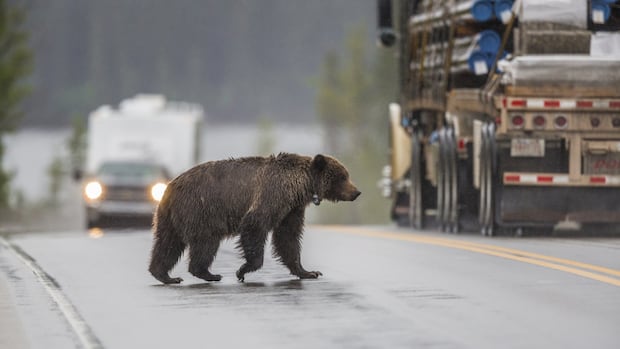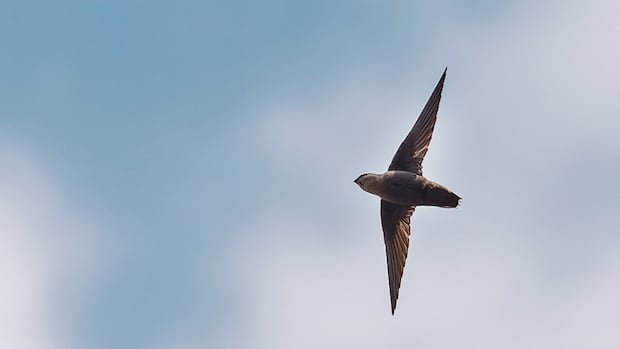Ontario’s government wants to “unleash” its resources with sweeping changes to its laws on protecting species at risk aimed at speeding up environmental approvals.
“With President Trump taking direct aim at our economy, it cannot be business as usual,” said Ontario Premier Doug Ford while announcing the government’s proposed Bill 5, also known as the Protect Ontario by Unleashing Our Economy Act, at the Toronto Stock Exchange on April 17.
The government has portrayed the current system as slow and cumbersome, driving away resource and development companies from Ontario. But the new bill is raising alarms from environmental groups, who say it could force the federal government to intervene to enforce its own overlapping protections. Here’s a look at some of the changes in the bill, which is currently being debated at second reading in the provincial legislature.
Offloading responsibility for some species
The new law would remove provincial protections for certain aquatic species and migratory birds that are also protected under the federal Species at Risk Act.
“Currently, proponents must get approval under both federal and provincial species legislation, causing unnecessary duplication,” said Gary Wheeler, spokesperson for Ontario’s Ministry of Environment, Conservation and Parks.
“Under the new legislation, proponents will not need separate provincial approval for activities affecting aquatic species and migratory birds already protected by federal legislation.”
David Browne, senior vice-president for conservation and policy at Birds Canada, is worried about this move, because he says the federal law was never designed to completely replace the provincial law.
The federal government has the power to order the province to protect the critical habitat of an endangered species, according to Brown, but he says it’s something Ottawa rarely does, and the preferred approach is to work with Ontario to protect birds and other wildlife.
“That tool is there as a backstop, not as, like, the way we want to do this. It’s there as a last resort,” he said.
“The way we want to do this is to have the provinces and territories taking their own actions with their own people on what they can do to protect the habitat for these birds. That’s the intention and the spirit of it.”
Changing the definition of habitat
Ontario’s current Endangered Species Act will be replaced completely with a new Species Conservation Act if the current bill becomes law. One of the most significant changes is to the definition of what a species’ habitat is, which critics say raises questions about what, exactly, needs to be protected.
The current law considers the habitat to be all the areas that the species relies on for living, gathering food, migrating, hibernating and reproducing.
The new law narrows that definition to “a dwelling place, such as a den, nest or other similar place, that is occupied or habitually occupied by one or more members of a species for the purposes of breeding, rearing, staging, wintering or hibernating” and the area immediately around that dwelling place.
Other areas, such as those the animal uses to find food, don’t seem to be included.
Some environmental groups are raising concerns about a bill introduced recently by the Ontario government that proposes to replace the Endangered Species Act. As Lorenda Reddekopp reports, the groups worry it would water down species protection.
“The definition of habitat is so narrow that what it means is less habitat than the species has now,” said Laura Bowman, a lawyer with the environmental law charity Ecojustice.
“And less habitat than the species has now, for a species already in decline, virtually ensures extirpation or extinction.”
The province says the changes are needed because of “uncertainty” over the current definition of habitat, and the new law sets clearer parameters for mining or construction companies to take the required protection measures.
Browne, with Birds Canada, says that while the previous definition of habitat was broad, the law allowed for further work to be done to define it more clearly.
Keeping the definition broad is done to account for each species having a different range, he says, noting that in the new version of the law, the definition is so narrow that it doesn’t even really refer to habitat.
“It’s just a particular piece of the habitat of any animal,” he said.
Recovery plans not included
Bowman says that a key part of the existing Ontario legislation is that once a species is designated as being at risk, the government must come up with a plan to recover its population.
“The goal of the Endangered Species Act was to recover the species. So that means restore enough habitat that the species population becomes stable or is increasing.”
The new law no longer has that requirement. The government can still designate certain projects for special scrutiny if they impact species of concern, and impose restrictions to protect those species.
“But whether or not the species survives or recovers isn’t even a mandatory consideration,” Bowman said.

Ontario Environment Minister Todd McCarthy, speaking in support of the bill in the Ontario legislature on Tuesday, said it will also increase enforcement powers for the province.
“There will be zero tolerance for bad actors who would dare to harm species,” he said. “Our new approach will leverage strong enforcement.”
He said that would include significant fines, potential jail time and even stronger investigative powers for provincial officers.
But Bowman says stronger enforcement powers don’t help if there aren’t many rules to enforce in the first place.
“Not like the legislation is robust enough to actually protect the species in the first place,” she said. “So the enforcement powers are, in my view, irrelevant.”






